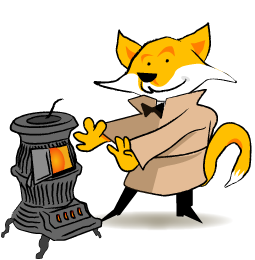Lesson 5: Conduction, Convection, Radiation
Investigating Heat Transfers
Overview
Heat moves from warmer matter to cooler matter in different ways. Students consider heat transfers that occur in every day situations and investigate three specific ways that heat moves: conduction, convection, and radiation.
Key Ideas
- Energy can move from one place, object, or system to another.
- Substances heat or cool as a result of energy transfer.
- Energy always transfers from warmer matter to cooler matter until both reach the same temperature.
- Heat transfers occur in three ways: by radiation, conduction, convection.
Lesson Goals
Students will:
- explain how heat moves from one place to another including how cooler materials can become warmer and vice versa.
- describe how heat moves by conduction, convection, and radiation.
- give examples of heat transfers that occur in every day situations.
Lesson Resources
 Download Lesson Plan (14 pages 832 KB)
Download Lesson Plan (14 pages 832 KB)
 Student Handouts 5.1 & 5.2: How Heat Travels & How Heat Travels Content Organizer (1.5 MB)
Student Handouts 5.1 & 5.2: How Heat Travels & How Heat Travels Content Organizer (1.5 MB)
 Student Handout 5.3: Observing Convection (1,016 KB)
Student Handout 5.3: Observing Convection (1,016 KB)
 Teacher Resources 5.1 & 5.2: Heat Transfer Scenes & Description of Heat Transfer Screens (2.2 MB)
Teacher Resources 5.1 & 5.2: Heat Transfer Scenes & Description of Heat Transfer Screens (2.2 MB)
 Teacher Resource 5.3: Paper Spiral Pattern (592 KB)
Teacher Resource 5.3: Paper Spiral Pattern (592 KB)
Resources for Convection, Conduction, and Radiation
Energy Transfer by Conduction and Convection from the BBC- Education School Bitesize. Animated diagrams and text explain the way heat is transferred.
Try this interactive tutorial from Teachers' Domain on Heat Transfers explaining convection, conduction, and radiation.
Heat from Glossopedia
Describes how heat moves, hot it is used, measured, reacts, and more.
Three Methods of Heat Transfer: Conduction, Convection, and Radiation
Convection, Conduction, and Radiation
NOAA’s National Weather Service – Jet Stream – Transfer of Energy [advanced level of content]
Explore the role of conduction, convection, and radiation as related to fire safety in this Newton's Apple episode on Firefighting.
Online Extensions
Make popcorn using each of the three methods of heat transfer.
Investigate how lava lamps work.
Learn about heat transfer and ocean currents.
Connections to Maine Agencies
A Maine Energy Education Program (MEEP) representative will come to interested schools, free of charge, to guide and support the concepts of this lesson.
For schools in Aroostook County, a Maine Public Service (MPS) representative will come to interested schools, free of charge, to guide and support concepts developed in this lesson.


